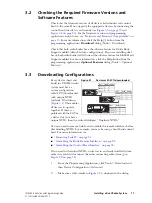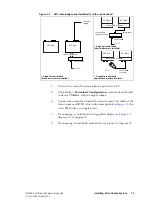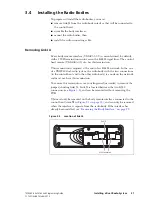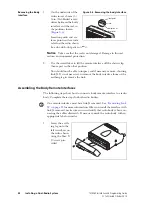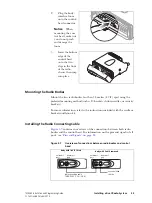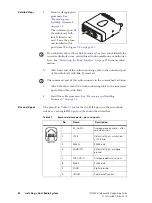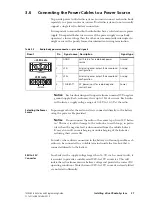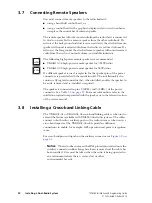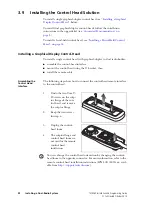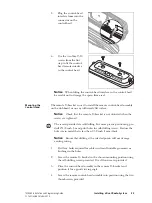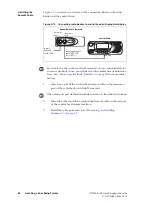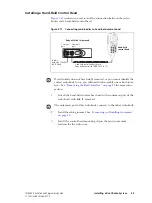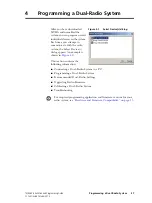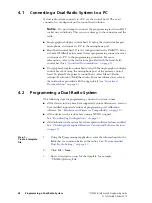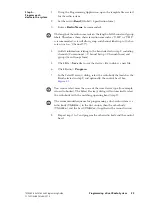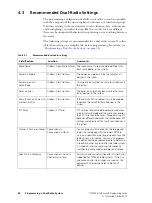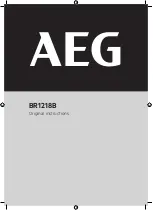
TM8260 Installation and Programming Guide
Installing a Dual-Radio System
25
© Tait Limited
October 2014
3.5
Installing the Antennas
A separate antenna for each radio is recommended, rather than a single
antenna configuration (such as a multi-band antenna with a duplexer or
splitter). See
“Installation Overview” on page 14
. Use ground-independent
antennas if no suitable ground plane is available.
It is important that the antennas are separated as far as possible from each
other, such as opposite corners of the vehicle, to reduce interference. MPT
1362 recommends a separation of at least ¼ wavelength for transmit
frequencies below 600 MHz and one wavelength for transmit frequencies
above 600MHz. Use the largest separation requirement of the two radio
bodies. See
below, and
“MPT 1362 Code of Practice” on page 7
.
Notice
You may need to install additional equipment such as filters if:
■
your installation environment does not allow for proper
separation,
■
the channel frequencies of the two radios are similar, or
■
after testing you experience poor performance or interference.
If the above cases apply to your installation, or you are unsure of the
equipment to install, contact an antenna specialist for further advice.
Install the antennas according to the antenna manufacturer’s instructions.
Good quality 50
Ω
coaxial cable must be used, such as RG58 or UR76.
Notice
Route the cables in a manner that minimizes:
■
coupling into the electronic control systems of the vehicle
■
coupling of electric vehicle systems, such as alternators, into the
radio
Avoid sharp bends in the cables. These distort the cable and alter its
electrical characteristics.
Table 3.2
Approximate frequency to wavelength conversion
Band Name
Frequency (MHz)
Wavelength (cm)
1/4 Wavelength
(cm)
A4 (lower range)
66
454
114
A4 (upper range)
88
341
85
B1 (lower range)
136
220
55
B1 (upper range)
174
172
43
H6 (lower range)
450
67
17
H6 (upper range)
530
57
14







